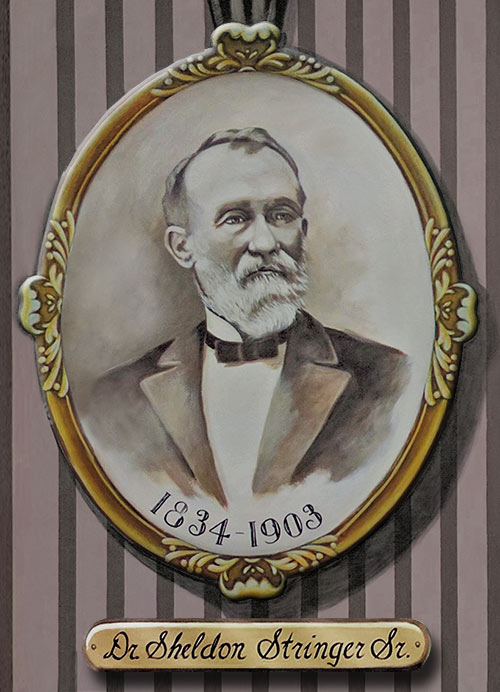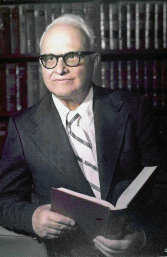|
When was the historic
Stringer house built?
It depends on who you ask.
|
-
This
building...was originally built for Dr. Sheldon Stringer, father
of the present city physician who was named after his father.
It was built in the fifties by contractor John T. Givens, who
built a number of houses of this type and class about that time.
THE TAMPA TIMES, "Mayor Has Sold Old House to Stalnaker Bros; Was
Landmark." 1914-June 13
-
The building was sold
yesterday by Mayor D. B. McKay to Stalnaker Brothers...The house was built in the fifties for Dr. Sheldon
Stringer, father of the present city physician. "Frame Dwelling Constructed More Than Fifty Years Ago Sold To
Stalnaker Brothers," THE TAMPA TRIBUNE. 1914, June 14
-
Some
time ago Stalnaker Bros. bought the old Dr. Stringer residence,
corner of Jackson Street and Florida Avenue...the old Tampa
landmark of fifty years standing. "Historic Stringer
House Moved" - THE WEEKLY TRIBUNE 1914, Aug. 27.
-
It was
originally erected by the grandfather of Dr. Sheldon Stringer in
1842 on the site of the south section (police station) of the
present City Hall. "The Oldest House in Tampa," THE TAMPA
TRIBUNE. 1948, June 6
-
Born in North Carolina
on November 13, 1834, Sheldon Stringer came to Tampa with his
family in 1841. In 1842, his father built a house near the
northwest corner of Jackson Street and Florida Avenue. THE
CITY CLERKS OF TAMPA, a project of the City of Tampa; 2017, Sept.
-
It was
originally built in 1842 on Jackson Street by physician Sheldon
Stringer. "The
Oldest House in Tampa Area Has Moved," by staff writer Paul
Guzzo." THE TAMPA BAY TIMES - 2018, Feb. 15
|
|

Read the whole article at "The
Oldest House in Tampa Area Has Moved," by Paul Guzzo. THE TAMPA BAY TIMES
|
| |
UNTANGLING THE STRINGERS
When was Dr. Stringer born? There were two Sheldon Stringers in
Tampa--a father and son; senior and junior,
and both were medical doctors. There was a third one in St.
Louis who was related, but not a doctor. While all
sources agree the senior doctor was born on Nov. 13 in North
Carolina, various sources give a range of three years for his birth, 1833
to 1836. His son, Dr. Stringer Jr., was born in Brooksville on June
23, 1883.
|
|
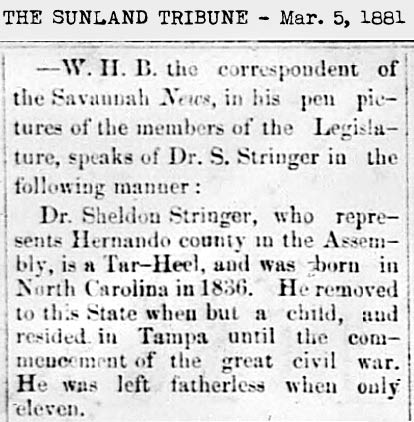
Dr.
Sheldon Stringer...was born in N. Carolina in 1836. He
removed to this state (Florida) when but a child...He was left fatherless
when only 11.
THE SUNLAND
TRIBUNE, 1881-Mar. 5.
From this article, using Sheldon's age when his father
died, we can conclude his
father died around 1847.
The newspaper article at right is cut short below to mainly
show what relates to his birth year. This is the earliest article
found that alludes to when the Stringers came to Florida and it's the
only one found so far that gives a clue as to when his father died.
EARLY SOURCES FOR THE ELDER DR. STRINGER'S BIRTH
YEAR
On a passport application of April, 1874,
Dr. Stringer states he was born "on or about" Nov. 13, 1833 in North
Carolina. "On or about" is part of the form, so the date could be exact,
or could be an estimate.
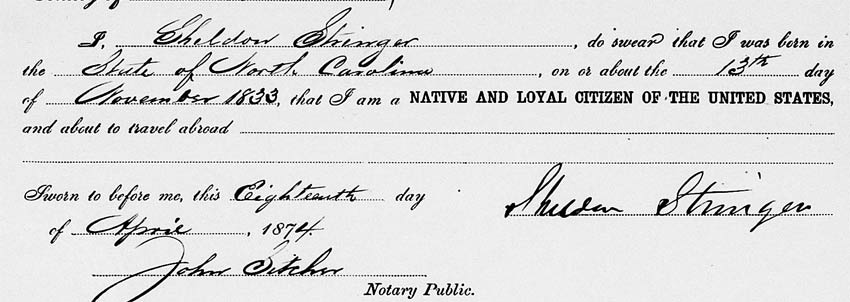
According to his tombstone, he was
born on November 13, 1834.

SHELDON STRINGER ON THE 1850 CENSUS
The earliest record found so far of Stringer family in Tampa was on the
1850 census. According
to this record, Sheldon Stringer was 15. The official census date
was June 1, 1850; all ages recorded were to be the age the person was on
June 1, regardless of when the enumerator visited. Sheldon's birthday was in November, so he would not yet have had
his birthday that year by June 1. If he was 15 on June 1, he would turn 16 in November of 1850, putting his calculated birth
date as Nov. 13, 1834. The date on Sheldon's grave marker is
in agreement with his 1850 census age.

On this census, Sheldon was living with Mary
(age 50 or 51) who was the head of the house, Laura (13) and Samuel
Stringer (19). This census did not record relationships, but other records show the females were Sheldon's
mother and sister. Samuel may be a brother or he may be a cousin.
Later, he turns up in Iowa and ultimately in Wyoming.
According to this record, Mary was born around 1799 in NC.
Her
tombstone in Oaklawn Cemetery shows Aug. 24, 1796 "near Wilmington."
If she married when she turned 21, that would have been around 1817.
The fact that Mary was around 36 when Sheldon was born indicates it is
highly likely that Sheldon and Laura had several older siblings. (Later
will be discussed Alexander Stringer, Sheldon's older brother.)
Samuel was born around 1831 in NC, Sheldon was born 1834 in NC, Laura was born around 1837 in GEORGIA.
As the 1881
article stated, Sheldon's father died when Sheldon was 11, so Mr. Stringer died some time around
1844 to 1847. (1844 if we use Sheldon's passport application, 1845
if we use his tombstone and 1850 census, 1847 if we use the newspaper
article.)
Other 1850 Census conclusions
Persons on censuses were supposed to be
listed in the following order: Head of house, spouse of head of house, children of head of house in order of birth,
other relatives in order of
birth, other unrelated household members. If Samuel was Sheldon's and Laura's
brother, he should have been listed right after Mary. Sometimes a
person listed out of order was just a mistake, but if this wasn't a
mistake, Samuel may have been a cousin.
Birthplaces could be an indication of their
migration to Florida. There could be siblings of Sheldon who are
older and born in NC. Sheldon could be the last child born in NC and
as the family headed to Florida by the time Laura was born in Georgia.
She was probably the last child born to Mary & Mr. Stringer.
WHAT DOES THIS MEAN SO FAR FOR TAMPA'S OLDEST
HOUSE?
At this point we can rule out #6. Tampa's oldest house would not have
been built in 1842 for Sheldon Stringer because he would have been
around 8 years old. But this doesn't rule out being built in 1842
for Sheldon's father, or that it wasn't built for Sheldon Stringer
later when he was a young man. It just rules out that both couldn't
be correct.
|
|
WHO WAS
SHELDON'S FATHER AND WHEN DID THE STRINGERS COME TO
TAMPA?
If we can find
Sheldon's father, we may be able to find out when or if he
came to Tampa. Did Mary Stringer
come to Tampa already a widow, or did the whole family come to Tampa?
The key to finding out might be Sheldon's much older brother,
Alexander Stringer.
|
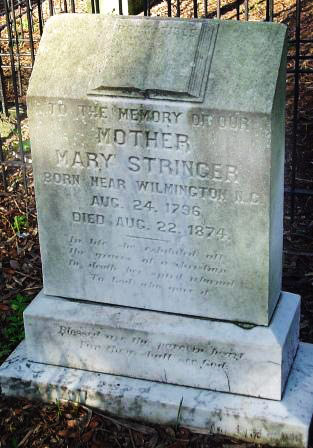
Photo by Donna McPherson at Find-A-Grave |
While Sheldon was living in
Tampa, he bought a plot in Oaklawn Cemetery. His mother
is buried there and according to her tombstone, she was born
"near Wilmington" NC on Aug. 24, 1796. She died on Aug.
22, 1874.
Alexander Stringer is buried in
Lake Lindsey Cemetery in Brooksville, FL.
|
|
His tombstone shows he was born
May 20, 1817 in Burgaw, Alabama. This date is in
agreement with his age of 63 on his 1880 census. But Burgaw
is not in Alabama, it is in North Carolina, 25 miles north of
Wilmington.
According to Alexander's birth
date, Mary would have been 21 when he was born. He
probably would have been Mary and Mr. Stringer's first child.
|
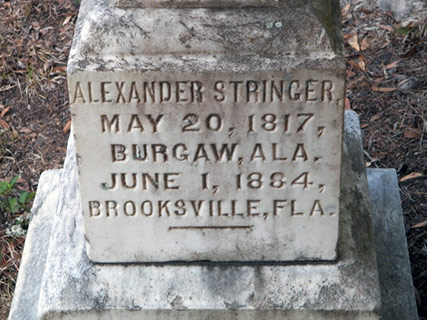
Photo from Find-A-Grave by Betty Lykes Stringer
Chapter 2407 UDC
|
|
|
Read about the
Stringers of Edgecombe County, NC-- Who was Mary Stringer, what
was her maiden name? Track down Alexander Stringer
before he appears in Tampa in 1880. What happened to
the 19-year-old Samuel Stringer who lived in Tampa in
1850 with Sheldon, his sister and his mother?
PAGE 5: THE STRINGERS EDGECOMBE
CO. NC |
|
|
|
TAMPA'S EARLY
DEVELOPMENT - THE FORT BROOKE YEARS to TAMPA'S REVIVAL |
|
Could the Stringers have
settled in Tampa as early as 1841? What kind of settlement
was early Tampa in the years of Fort Brooke? Was it a place ready
for civilian settlement and starting a homestead? How safe was it
here during the period of the 2nd Seminole Indian War and why would a
family settle here, especially if widowed with children? |
|
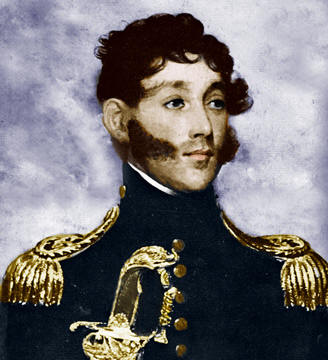 |
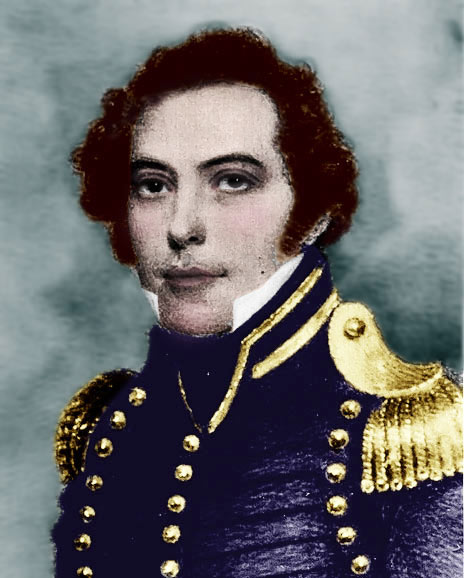 |
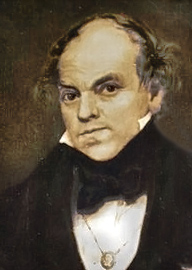 |
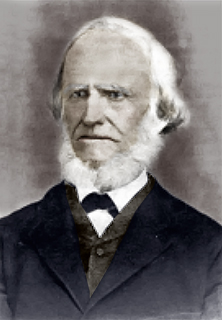 |
|
George Mercer Brooke
(1785-1851), U.S. Army, brevet major general. While a colonel,
ordered in 1823, along with James Gadsden, to establish a
military presence in the vicinity of Tampa Bay, in the newly
acquired Florida Territory, to contain the Seminole Indians
and curtail illegal activities along the Gulf Coast.
|
James Gadsden (1788 - 1858) was a
protégé of Andrew Jackson. In 1824, six years after this portrait
was done, he surveyed the bounds of Florida's Indian nation, exploring, in
the process, much of the Peace River valley. Photo colorized from
Canter Brown Jr's Florida’s Peace River Frontier, 1991. |
Augustus Steele, first county judge in Hillsborough Co. which
he practically founded himself, elected to the Territorial
legislature twice. First to lay out plats of what would be the city of
Tampa. After the Dade Massacre, he delivered the message to the Governor
in Tallahassee. Developed a resort in Atsena Otie, now called Cedar Key. |
John Jackson - Irishman who came to
the U.S with his brother in 1841, former asst. city engineer at New
Orleans, hired to survey territorial Florida, hired to survey the village
of Tampa and named its streets, early merchant, and short-term mayor just
before the Civil War. |
|
See for yourself here on this separate page:
The Spanish land grants before Florida belonged to the United States, the
Hackley grant, were Richard and Robert Hackley robbed? The establishment of Fort Brooke, Florida becomes a state,
Hillsborough becomes a county, and Tampa becomes a village.
PAGE 2 - TAMPA BEFORE 1850 - WHO WAS
HERE AND WHEN DID THEY ARRIVE?
|
|
COULD THE HISTORIC
HOUSE HAVE SURVIVED THE
SEPT. 1848 HURRICANE? |
|
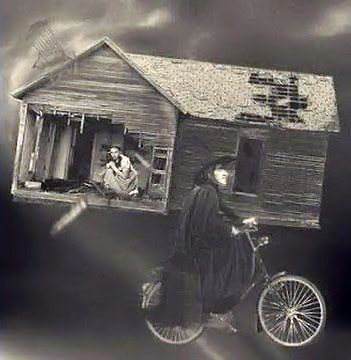
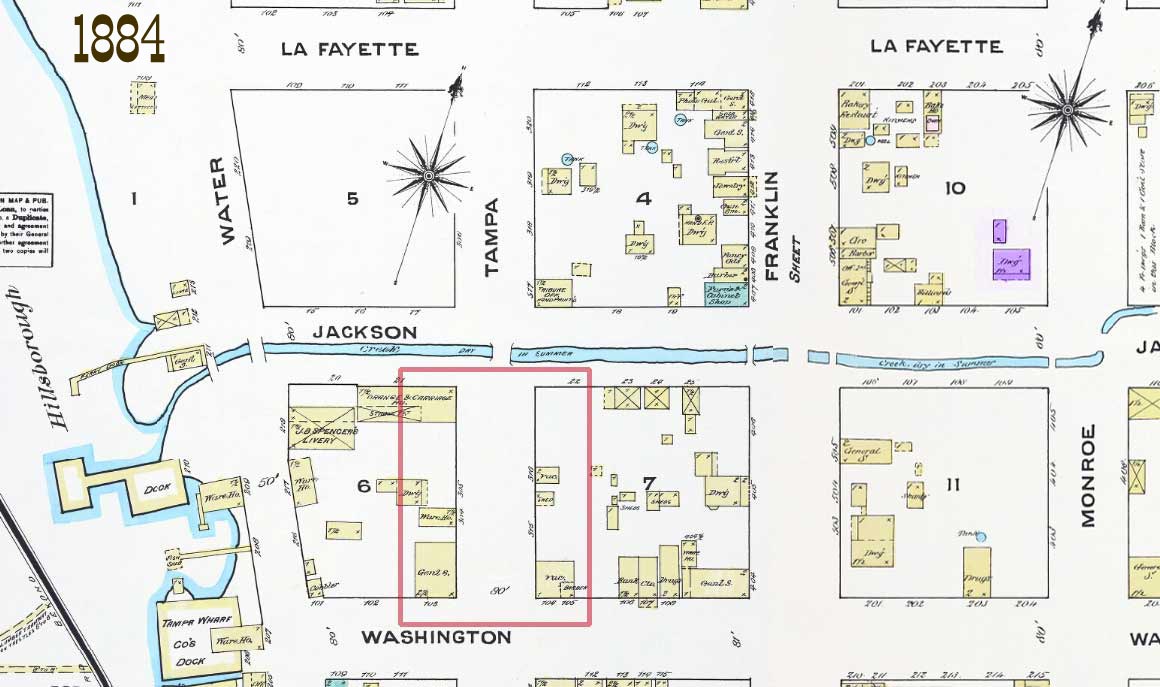
This 1884 Sanborn map
shows the area on Tampa Street between Jackson and Washington
where John Jackson's home was located in 1848. The dwelling
in purple shows the Stringer house.
This entire area was flooded and most all of the structures were
destroyed or sustained heavy damage from tidal surge and high
winds.
COULD THE STRINGER HOUSE HAVE SURVIVED? DO RECORDS SHOW THE
STRINGERS WERE IN TAMPA AT THE TIME?
Read about the 1848 hurricane and the damage it caused, here on
this separate page -- Decide for yourself!
PAGE
3 - THE HISTORIC STRINGER
HOUSE: WAS IT HURRICANE-PROOF?
|
|
THE GIVENS FAMILY and
CARPENTER JOHN T. GIVENS
Crucial to
determining the construction date of the Stringer house, who
built it and who it was built for, is to determine when John T.
Givens came to Tampa.
Could Sheldon Stringer have come to
Tampa with his family in 1841, and did his father build
a house (or have one built) near the northwest corner of Jackson Street and
Florida Avenue in 1842? (THE CITY CLERKS OF TAMPA, a
project of the City of Tampa, Sept. 2017.)
This
building...was originally built for Dr. Sheldon Stringer, father
of the present city physician* who was named after his father.
It was built in the fifties by contractor John T. Givens, who
built a number of houses of this type and class about that time.
THE TAMPA TIMES, "Mayor Has Sold Old House to Stalnaker Bros; Was
Landmark." June 13, 1914.
*The city physician was Dr. Sheldon
Stringer, Jr.
Did early Tampa carpenter John
Givens build the historic Stringer house? Was it before or after
the great hurricane of 1848? Read about the
Givens family and their house,
and the building of Tampa's courthouses:
the McKay Courthouse and the Breaker Courthouse.
Do you know which one this was below?
All at this separate
page:
PAGE 4 - IT'S A GIVEN?
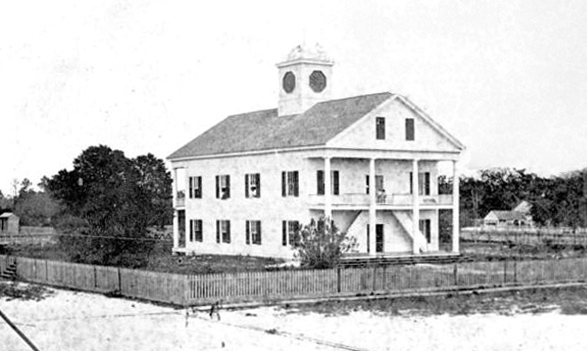
The McKay courthouse or the Breaker
courthouse?
|
|
SHELDON STRINGER, SR. TIMELINE
The first mention of Sheldon Stringer
found so far (other than his 1850 census) is from Tampa's city
council minute books, where it shows he was Tampa's 2nd City Clerk.
His term as Tampa’s second City Clerk lasted just over ten months*,
and his signature is the first to appear as City Clerk in the very
first City Council minute book, as William Ashley did not sign his
name in the book until his second term in 1862.
|
City Clerk |
Term |
Source |
|
William Ashley |
February 9, 1856
– February 9, 1857 |
|
|
Sheldon Stringer |
February 9, 1857
– February 10, 1858 |
Council Minute
Book #1, page 4 |
|
John R. Cox |
February 10, 1858
– May 24, 1858 |
Council Minute
Book #1, page 11 |
|
E.E. Barry |
May 24, 1858 –
February 12, 1859 |
Council Minute
Book #1, page 22 |
|
John Darling
|
February 12, 1859
– February 2, 1861 |
Council Minute
Book #1, page 43) |
|
Robert Brenham
Thomas |
February 3, 1861
– February 3, 1862 |
|
|
William Ashley |
February 3, 1862
– February 22, 1862 |
Council Minute
Book #1, page 78 |
|
Govt. Suspended
by Military |
February 22, 1862
– October 25, 1866 |
|
City clerk info from
City of Tampa, City Clerks of Tampa, 2017
*There is a discrepancy with the length of Dr. Stringer's term in
office in
the narrative ("a little over ten months")
and the length indicated in their chart (a year.)
An article in the June 6, 1857
"Florida Peninsular" says that on June 1, at a meeting of the young
men of Tampa at the "Apothecary Hall,"
Sheldon Stringer, who was Tampa City Clerk at the time, was appointed Secretary of a committee formed to
draft a resolution honoring their deceased friend, Emory
Livingston Lesley. The article has been shortened for display
here. |
|
|
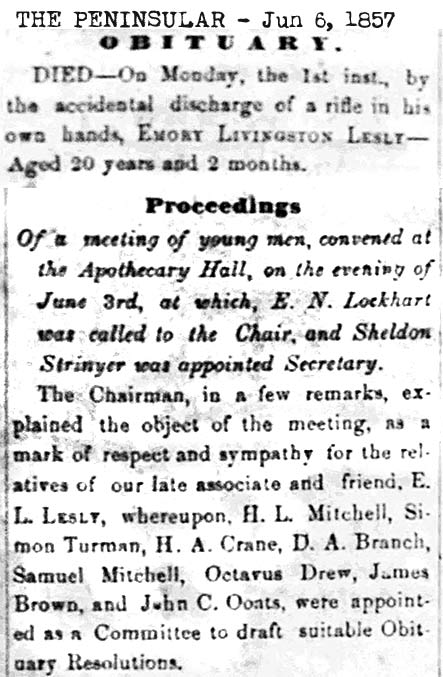
Below: July 30, 1859 THE PENINSULAR
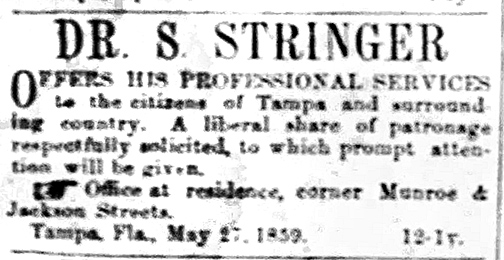 |
Sheldon selected medicine as his profession and graduated in 1859 from the medical department of the
University of Louisiana
in New Orleans.
The school would eventually become Tulane University School of Medicine.
With this 1859 ad below, Dr. Sheldon Stringer announced his medical
practice to the people of Tampa and the surrounding countryside. The
ad states his practice is at his residence at the corner of Monroe
(which would become Florida Ave. in the 1880s) and Jackson. This was
the original location of the historic Stringer house.
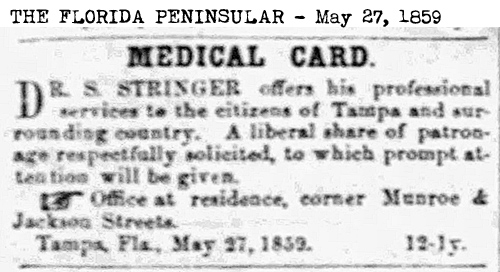
On Feb. 3, 1860, Stringer announced his partnership with Dr.
Todd. "Especial attention given to Surgery." Office at
the Tampa Book & Drug Store.
 |
| |
|
From "The Birth of an Infant Society: The
Hillsborough County Medical Association, 1895-1899" by Cathy Bayless
Slusser - Tampa Bay History magazine, Spring/Summer 1988, Vol. 10, No.
1.
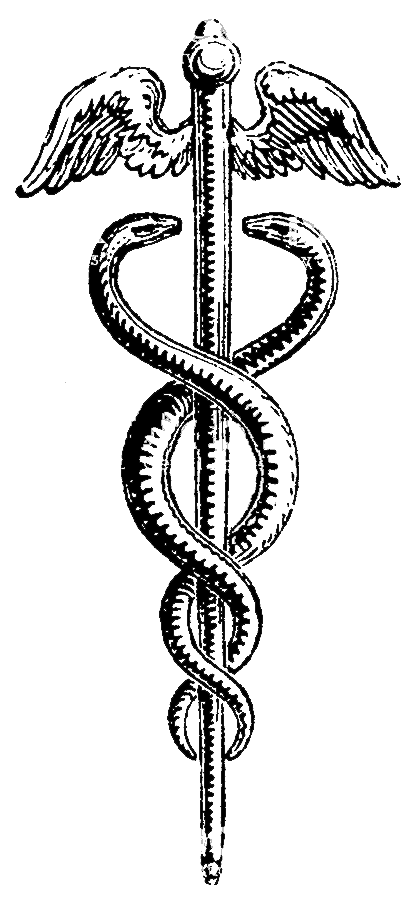 Physicians in
Hillsborough County had long tried to organize in an effort to solve
the public health problems of disease and poor sanitation brought on
by primitive conditions and rapid growth. Individually or in small
groups, they had led the fight for public health officers, a
dependable water supply, indoor plumbing and paved streets. They
also worked to establish a quarantine hospital for use in times of
epidemic. Physicians in
Hillsborough County had long tried to organize in an effort to solve
the public health problems of disease and poor sanitation brought on
by primitive conditions and rapid growth. Individually or in small
groups, they had led the fight for public health officers, a
dependable water supply, indoor plumbing and paved streets. They
also worked to establish a quarantine hospital for use in times of
epidemic.
In addition, the
physicians hoped to improve their own working conditions and
standard of living. The Tampa physician’s practice was a demanding
one. On call twenty-four hours a day, he never knew when a knock on
his door would take him from his bed to serve a patient. Doctors
often worked around-the-clock during periods of epidemic which
occurred regularly. Prevention and control of such diseases as
malaria, yellow fever, measles, influenza and diphtheria occurred
slowly and with a great deal of patience. During this period,
although epidemics were a common event, they still caused panic
among residents.
Accidents were also
routine, and physicians never knew when their skills might be needed
to treat injuries caused by runaway horses, overturned railroad cars
or gunshot wounds. To reach their patients, they frequently had to
travel several miles on horseback or in a horse-drawn carriage,
which was often made more uncomfortable by driving rain or hot,
muggy weather. Tampa physicians complained that they did not receive
adequate compensation for their work. As in many agricultural areas,
payment was often in goods or services.
As early as 1859,
Tampa physicians attempted to organize in an effort to solve this
financial problem. On June 16 of that year, five Tampa doctors,
S.B. Todd, John P. Crichton, W.A. Lively, Sheldon Stringer and
Franklin Branch, met at Branch’s office to discuss establishing
a minimum fee schedule. At that meeting, the doctors agreed to
charge specific rates for their services. Only two excuses exempted
physicians from asking for the set rate. They could reduce the bill
if the patient could not pay or had been under their care for a long
time. By restricting physicians to certain prices, the doctors
hoped to reduce competition and raise their incomes. |
In A History of the City of Tampa and the
Tampa Bay Region, 1950, by Karl H. Grismer, Edited by D. B. McKay,
Grismer wrote about Dr. Stringer:
He had just been graduated from
medical school and was convinced that Tampa physicians were not
receiving enough for their services. So he led a movement to
standardize fees, as follows:
|
Ordinary
prescriptions |
$1.00 |
|
Giving opinion on
a Negro offered for sale |
$10 |
|
Extraordinary
prescriptions |
$2.00 |
|
Removing
cataracts |
$5 to $50 |
|
Visits in town to
9 p.m. |
$1.50 |
|
Tonsillectomies |
$5 to $10 |
|
Visits in town
after 9 p.m. |
$3.00 |
|
Amputating leg |
$60 |
|
Visits in the
country during daylight |
$1.00 per mile |
|
Amputating hip
joint |
$100 |
|
Visits in the
country at night |
$1.50 per mile |
|
Simple obstetric
cases, white or slave |
$20 |
|
Visits in the
country if raining |
$2.00 per mile |
|
Treatment of
yellow fever |
all charges
doubled. |
|
Calls after the
doctor had retired for the night |
$2.50 per mile |
| |
|
|
|
In "Pioneer Florida," D.B. McKay wrote:
| It is of incidental interest
that the birth of Florida’s only set of quintuplets occurred on
the Lykes property, the "Lykes Lemon Grove," just north of Bay Port in
1860. The mother, Mrs. Joe Goethe, described as "less than average
size, and not very robust," was attended by Dr. Sheldon Stringer Sr.
The quintuplets, all boys, were perfectly formed at birth, but all
died in infancy." |
| |
During the year 1860 Dr.
Stringer
appeared for examination before the Army Medical Board in New York, and
was informed that he would be commissioned as soon as his services were
required.
THE STRINGER'S 1860 CENSUS IN TAMPA

In July of 1860, 25-year-old Sheldon was
a doctor "M.D." Above him, his sister Laura and mother Mary.
Mary worked at a boarding house. Being listed out of chrono
order with his sister, and a separate assessment of Sheldon's home and
property, it seems Dr. Stringer was living in a separate part of the dwelling or on
the same property as his mother's house.
While
living in Tampa in 1860 he purchased of 160 acres of property in Hernando
County.
Dr. Stringer
resided in Tampa as a surgeon of the Regular Army, until
the secession of the Southern states
and the start of the Civil War, when he resigned and offered
his services to President Davis.
When the war broke
out he entered the State service as Surgeon in charge of the
battalion at Tampa, serving successively on the staff of General
Trapier. On February 13,
1862 Dr. Stringer was commissioned and appointed to the position of
Surgeon on the Medical Staff of General Joseph Finnegan, who was
commanding Confederate Troops in Florida.
He
also served in the same position
under Generals Milton
and Turner and was stationed at St. Augustine, Florida, with
the rank of major, in the capacity of chief surgeon of the Florida
Division and in charge of the Confederate Hospital at that location.
Dr. Stringer took
charge of the hospital in Fernandina [Jacksonville], then served as the
Post Surgeon in the Lake City Hospital. In 1865 Dr.
Stringer treated the wounded who had been brought from the Battlefield of Olustee.
Source: Google Books: History of Florida, Past and Present .
Vol. 2 pg.44-45 The Lewis Publishing Co. 1923
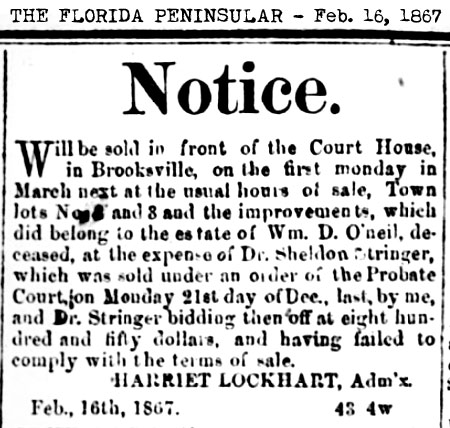
At the close of the
war he settled at Brooksville, Hernando County,
where his sister,
Laura, owned a lot and home.
There he practiced his
profession and the culturing of oranges.
For a number of years he acted as the Chairman of the Democratic
Executive Committee of his county, and the heavy majorities there
given attested his skill as an organizer.
In 1867 Dr. Stringer
had taken over the medical practice of Dr. Howell T. Lykes of Hernando
County. By means of one
horse and a carriage that the doctor owned, he made house calls.
At right: Apparently, Dr. Stringer had
bid for property from the estate of a William D. O'Neil, for $850, but
then changed his mind. The Notice announces that on the first Monday
in March, the lots would be sold from in front of the courthouse.
By 1869 Dr.
Stringer had purchased an additional 80 acres adjoining to his previous
160 acres, in section 3, township 22, range 19; north of Brooksville.2 By 1872 Dr.
Stringer had 1140 acres.
He purchased a
home in Pierceville.
He purchased of
property in section 9, township 24, range 20, located in an area that
would become Pasco County.
The Stringers moved to Brooksville and on the 1870 census, Sheldon was the head of house, age 35 and listed as a physician.
His mother, Mary Stringer, was 73 and his sister, Laura, was 26.

1870 Census of Hernando County,
Brooksville
Mary's age indicates a 1796-97 birth year.
On December 11, 1872, Dr. Stringer's sister
Laura married William Ross.
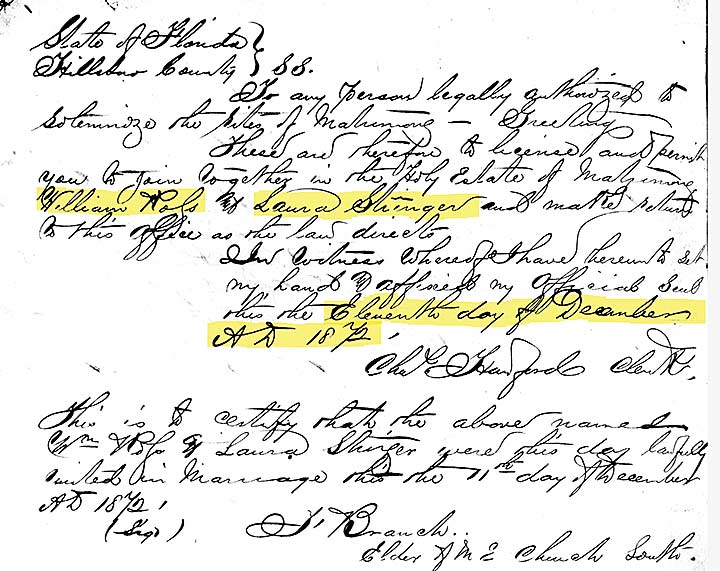
On February 19,
1874, Sheldon Stringer married Margaret Elizabeth "Betty" Lykes. Margaret was the
sister of Dr. Howell Tyson Lykes; Howell and
Elizabeth were the children of pioneer resident Frederick Eugene Lykes.
In 1875 Dr.
Stringer and Betty had their first child, named after Betty's father--
Frederick Lykes Stringer. Fred Stringer went to law school in south Carolina and
became a Brooksville attorney, legislator, and Hernando County Circuit
judge. He would become prominent in Hernando political affairs in
the early twentieth century.
https://www.findagrave.com/memorial/84964145/sheldon-stringer
In 1877 Dr.
Stringer took the position of Superintendent of Public [County] Schools.
He assumed the position of School Board secretary in 1880.
On February 17,
1881 Stringer received full title to this coastal property, in section 28,
township 24, range 16.
Dr. Stringer
continued to live in Spring Hill.
"He is a clever,
polished gentleman, as well as a skillful and successful physician,
and the people of his county hold him in the highest esteem and
respect." |
1880 Census, Hernando
Co., Brooksville, Fla.
By 1880, Dr. Sheldon Stringer, now 44, was married with
a 5-year old son and newborn daughter.
In his home was Alexander Stringer, listed as his widowed brother.

Sheldon and Alexander both born NC, with both parents born NC.
If
Alexander really is his brother, there would be 19 years in between them
and time enough for several more siblings. His age would also be a
clue as to how late their parents married. Candidates for their
parents would need to have a marriage date around 1817 or sooner and birth
years of 1796 or sooner (if they married at adult age of 21.)
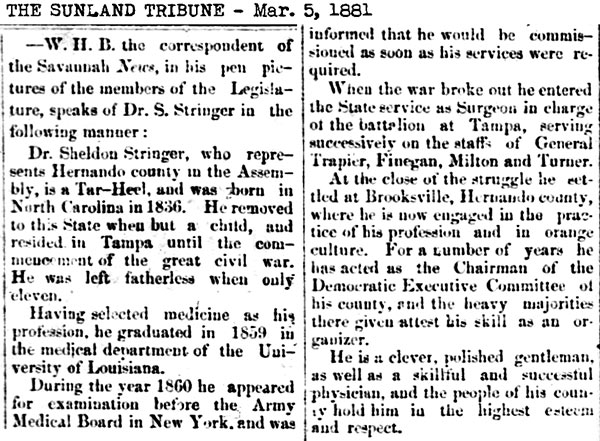
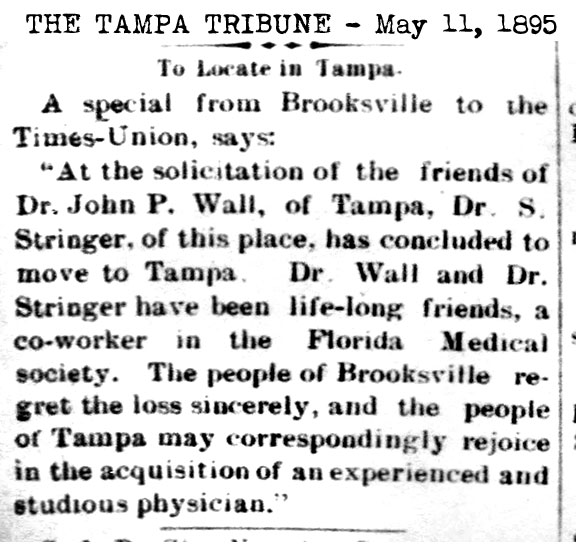
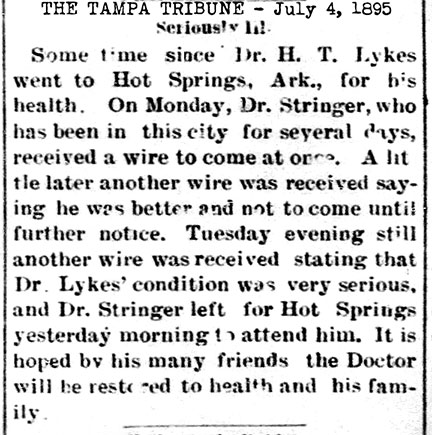
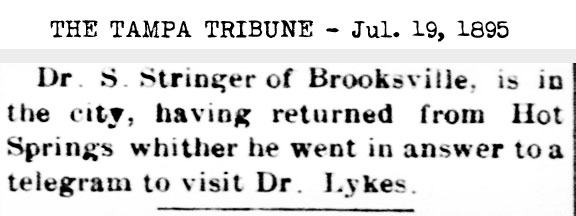
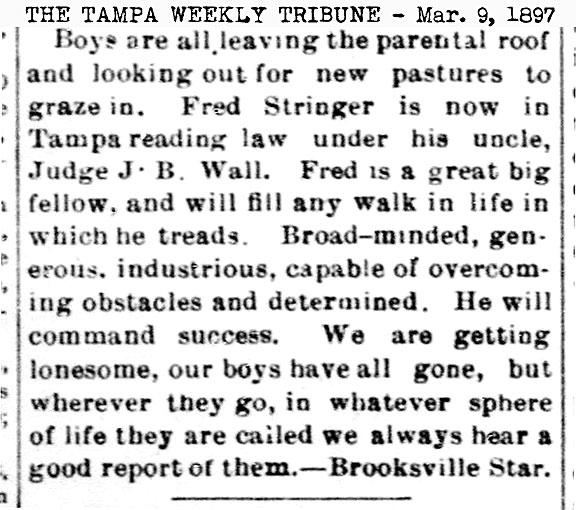
1900 Census, Brooksville,
FL

Sheldon and Margaret were married for 26 years. Children Fred,
Marguerite and Sheldon, Jr.
The Stringer house in the Rinaldi Guide Book
of Tampa, 1920.
At far right can be seen the front facade of the 2nd floor of the 1890
Tampa City Hall.

1920 Rinaldi Guide Book from Internet Archive
|
|
|
In 1883 Dr.
Stringer served as the trustee of Brooksville School.
The Stringers had
a daughter, Marguerite, who married Dr. Gwynn.
In June 1883
Sheldon and "Betty" had their third child, Sheldon Stringer Jr.
In 1887 Dr.
Stringer attended the International Medical Congress, 9th Session.
Dr. Stringer
presented a a speech titled "A Rational Method of Relieving Asphyxia in
the Newly Born Infant." Stringer makes reference to the uses of a "human
incubator".
|
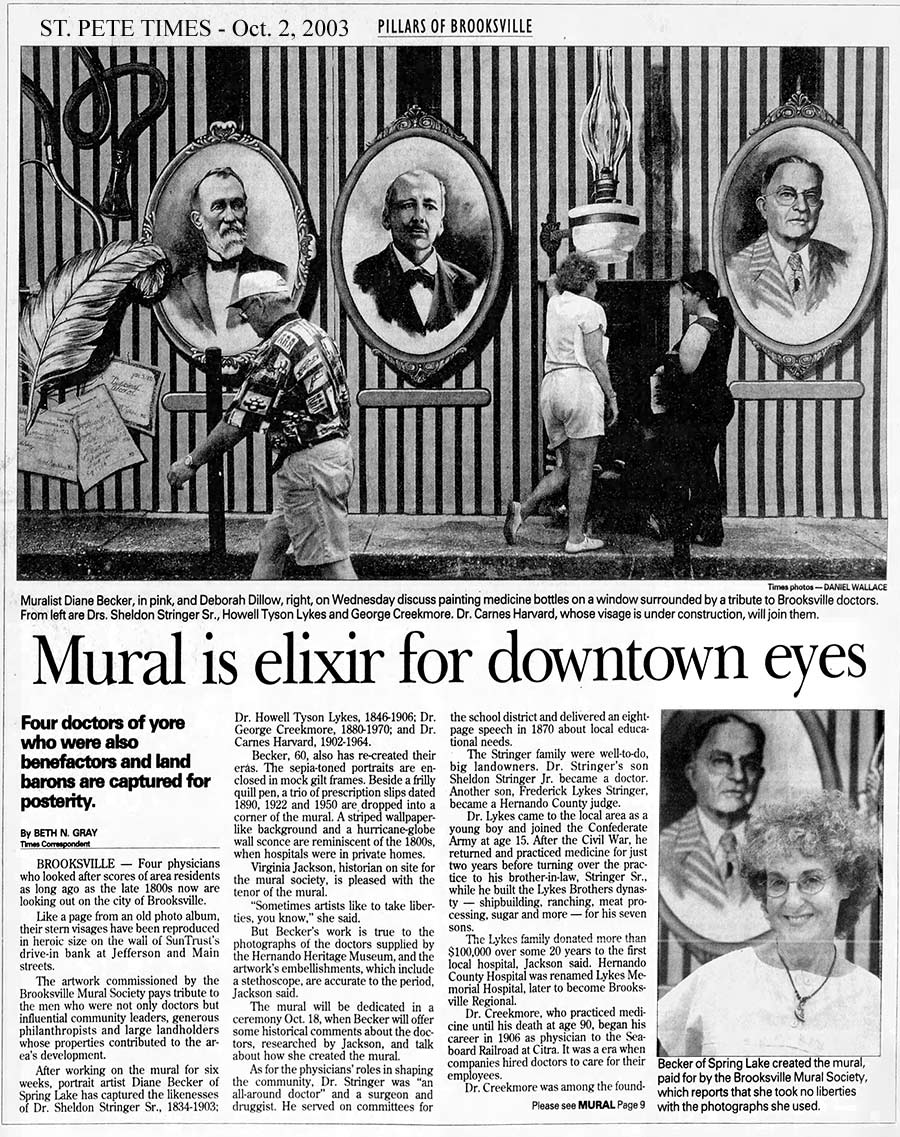
In 1890 Dr.
Stringer served as President of the Florida Medical Association.
In the late 1880's
and early 1890's Dr. Stringer owned and operated the City Drug Store in
Brooksville.
By 1897 Dr.
Stringer had become a member of the 15th International Congress of
Hygiene.
Dr. Sheldon
Stringer died on April 6, 1903 and was interred in the Lykes Family
Cemetery, which his father-in-law had started.
In Sheldon's
memory the Stringer Family erected a very large headstone obelisk.
1910 Census, Hillsborough
County, Tampa

Dr. Sheldon Stringer Jr. living in the Hyde
Park section of Tampa, in the home of his uncle Joseph B. Wall, along with
Sheldon's sister Marguerite and her husband Dr. Van Henry Gwinn.
Right around the corner on Magnolia Ave. was Helen Giddens, daughter of
Isben S. and Ruby Giddens, whom he would
marry in 1911.
| .
SHELDON STRINGER, Jr., M. D.
A record of the professional career of Dr. SHELDON STRINGER, JR.
of Tampa shows that he has been an honor to his calling and a
valuable addition to the ranks of those who are laboring to bring
about necessary changes in the management of civic affairs. A man of
deep learning, profound in his ideas, practical in his suggestions,
Doctor Stringer has naturally taken a notable place among his
associates for many years, and has figured prominently in the
medical profession of Hillsboro County and the City of Tampa.
Throughout his entire career he has maintained a high standard of
ethics and honorable practice. He is a worthy member of the
different medical associations, and is looked upon as one of the
ablest physicians and surgeons of Tampa. The spirit of progress
which has been the dominant factor in the opening years of the
twentieth century has been manifest in no connection more strongly
than in the medical profession, where investigation and research
have brought forth many scientific facts and principles, solving
nature's secrets. Step by step Doctor Stringer has kept pace with
the march of improvements, and has been chosen by a number of
concerns to serve them in a professional capacity.
Doctor Stringer was born at Brooksville, Florida, June 23, 1883,
a son of Doctor SHELDON and MARGARET ELIZABETH (LYKES) STRINGER,
natives of North and South Carolina, respectively.
Reared in an intellectual atmosphere, Doctor Stringer attended
the local schools of Brooksville and the Medical College of
Virginia, and was graduated from the latter in 1905, with the degree
of Doctor of Medicine. For the first three months thereafter he was
in practice at Brooksville, and then spent six months at Key West,
Florida, following which, in 1906, he located permanently at Tampa,
which has continued to be the scene of his professional work. In
addition to his membership in the various societies of his
profession he is an honorary member of the New York and New England
Association of Railroad Surgeons, and of the Association of Military
Surgeons of the United States. At one time he was president of the
Hillsborough County Medical Society, and also served it as secretary
and treasurer. Until the Tampa Northern Railroad was absorbed by the
Seaboard Air Line he was its chief surgeon. While living at
Brooksville he was local surgeon for the Atlantic Coast Line
Railroad, and was chief surgeon of the Brooksville & Hudson
Railroad. During Governor Gilchrist’s administration he was a member
of the State Board of Regular Medical Examiners, and at one time was
surgeon-in-charge of the Gordon Keller Memorial Hospital, which
position he held for 10 years; under Mayor D. B. Mckey’s
administration he was city health officer for Tampa; and at present
is acting assistant surgeon for the United States Public Health
Service for the Tampa District. During the period of the war he was
surgeon of No.1 local examining board, and at present is president
of the local board of surgeons for pension examinations. He
presented himself for duty and examination at the Army Medical
College at Washington, District of Columbia, and was ordered to
report to Maj. R. C. BRYON at Richmond, Virginia, for examination.
Doctor Stringer was accepted, but the commission was held up through
some delay, so he did not receive his notification of acceptance
until a few days following the signing of the armistice. The general
order canceling all commissions prevented his receiving the one to
which he was entitled. Doctor Stringer is a Mason and belongs to
Tampa Lodge No. 708, B. P. O. E. In 1912 Doctor Stringer married
Miss GENEVIEVE GIDDENS, a daughter of I. S. and RUBIA N. GIDDENS.
Doctor Stringer finds pleasure and recreation through his membership
with the Tampa Yacht Club, the Tampa Country Club and the Tampa Golf
Club. A well-read man, Doctor Stringer enjoys his further studies in
medicine and surgery. He holds to high ideals in his profession, and
is constantly seeking to broaden his knowledge that his labors may
be more effective, and with discriminating intelligence selects the
best methods for the treatment of individual cases, the soundness of
his judgment being manifest in the excellent results which follow
his labors.
File contributed for use in USGenWeb Archives by: Nancy Rayburn
Source: Vol. II pg.44-45 The Lewis Publishing Co. 1923 Author:
History of Florida, Past and Present .
http://files.usgwarchives.net/fl/hillsborough/bios/stringer116bs.txt
|
| |
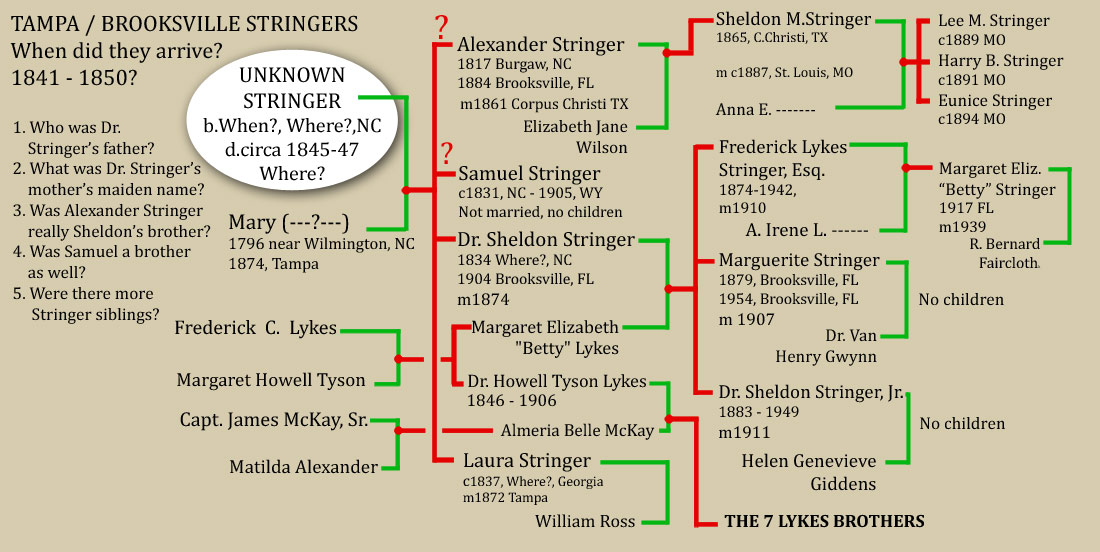
TampaPix wishes to thank Gianna Russo, daughter of Lula Belle (Stalnaker)
Russo (Judge Stalnaker's daughter,) for providing corrections to the
information on the Stalnaker family, originally presented here (below),
which was deduced from census records. Gianna contacted me on June
16, 2018 and as a result, I have made the changes and addition information
on the Stalnaker family.
Imboden Stalnaker purchased the 1842(?)[doubtful]
frame home in 1914 and had it moved to 3210 8th Ave. to save it from
destruction when the new City Hall was to be built at this location in
1915.
In 1920, 58 year-old Imboden Stalnaker was
living on 7th Ave in Ybor with wife
Belle son Karl, daughter-in-law
Lillian and
son Leo. Imboden owned Stalnaker
Feed Store, located on 6th Avenue in Gary (now eastern Ybor City.) Imboden Stalnaker,
described by the Tampa Tribune in his obituary as a “pioneer East Tampa
merchant,” had been a school teacher
and owner of a
mercantile store, before becoming a resident of Tampa 43 years prior to
his death in 1948.
His first venture in Tampa was a grain and fencing
store on Whiting between Franklin and Tampa Streets. The business was
later moved to Gary, formerly a separate entity, but would become part of
the City of Tampa by annexation. On the 1930 census, Imboden was
living at 3210 8th Ave with wife Belle, in the old home he had rescued from
destruction. Imboden owned the home and it was valued at $2500.
It
was here that young Leo Stalnaker spent his youth. Needing more room
as his family circle expanded, Leo rebuilt and enlarged a bungalow two
blocks from his boyhood home. In 1930, Imboden's son Leo Stalnaker
was living at 3510 8th Ave with his wife Judson, adopted son Zeno,
son Leo Jr. and daughter Lula
Belle. Leo (the father) was a lawyer of
general practice. It was during the stormy crime-ridden years of the
Charlie Wall era that Leo Stalnaker, Sr. was appointed Municipal (Police Court)
Judge in 1927. Stalnaker quickly earned a reputation as a “crusading
magistrate.” He had already gained national attention during his 1927-28
term as a member of the Florida House of Representatives as an opponent of
the teaching of evolution in the public schools. Showing neither
fear nor favor, on his first day on the bench, Stalnaker quadrupled fines
and gambling and liquor law violators got stiff jail sentences.
Near
the close of his productive and colorful career, Leo Stalnaker, Sr, at age 82,
continued his service to the public and to the Bar when he was appointed
General Master in Chancery for Hillsborough County Circuit Court on
January 11, 1979.
From the conclusion of Judge
Buck's biography of Judge Stalnaker (written in the early 2000s):
Like most public figures, Leo was a “joiner,” affiliating with many
social, fraternal and veterans organizations. But his most enduring and
lifelong attachment was to the Methodist church. It was during his active
participation in the Methodist Epworth League, a group within the church
catering to young adults of the faith, that he met and married Judson
Lorene Vest. They had three children: Zeno
(adopted son), a lifetime
educator now living in Lakeland; Leo, Jr. of Tampa, former City
Editor of the Tampa Daily Times, Asst. Mgr. Editor of the Tampa Tribune,
and Associate Professor, School of Journalism, and Dir. Of Student
Publications, University of South Florida, school newspaper "The Oracle";
and Belle Russo, of Tampa, formerly a Supervisor in the AFDC
program, Florida Dept. of Health & Rehabilitative Services. Leo had five
grandchildren. Following the death of his wife, Leo married her sister,
Kathleen.
Stalnaker’s mission on earth
ended June 22, 1986. One of art’s purest challenges, it has been said, is
to translate a human being into words. That is the objective of this piece
about Leo Stalnaker. The reader must decide whether or not it had
succeeded.
There are many interesting
articles and items concerning Judge Stalnaker at the USF Digital
Collections.
Visit them here.
Judge Morison Buck wrote a short biography about
Judge Stalnaker which can be found in a PDF at the USF digital
collections:
Morison Buck: Biographies of Hillsborough County Judges Leo
Stalnaker. Some of the info from that biography was combined
with info from other sources to create this section.
COURT
PROCEEDINGS IN JUDGE LEO STALNAKER'S COURTROOM, 1927
Burgert Bros. photo from the USF Digital Collection of Photos.

Notice the segregated spectator area.
Below is a close up of above photo.
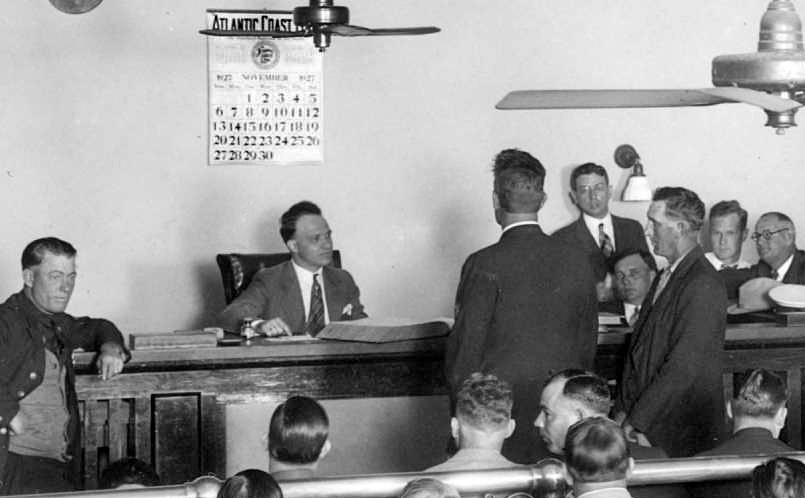
Judge Leo Stalnaker presiding over his court. Notice the Nov. 1927
calendar.

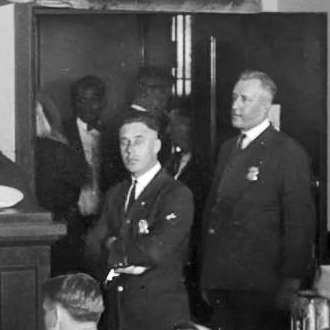
People on the right
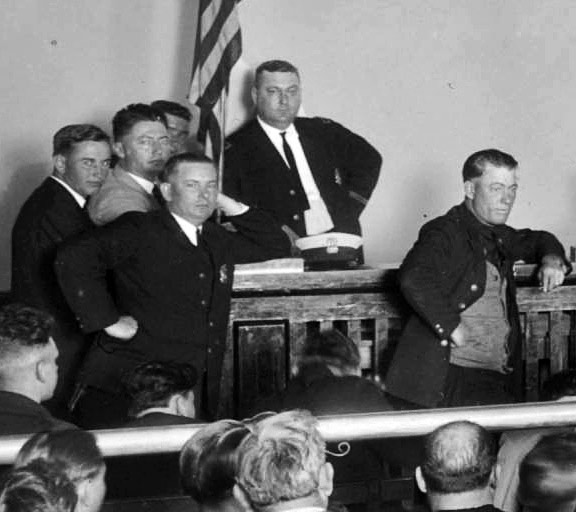
People on the left
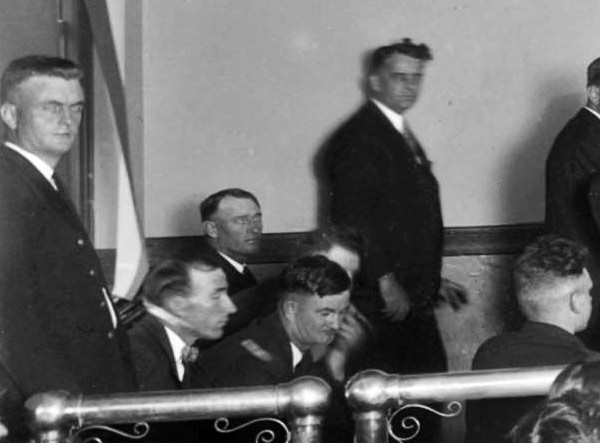
People on the far left
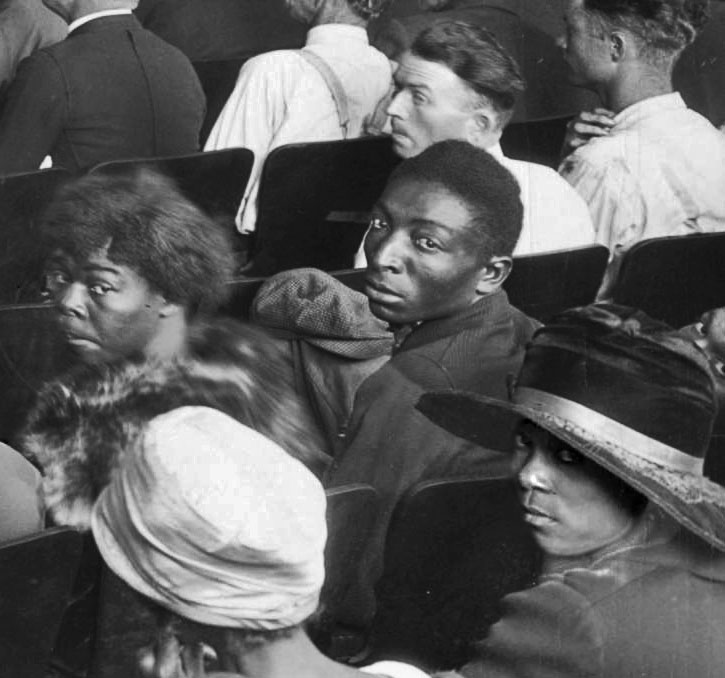
People in the audience
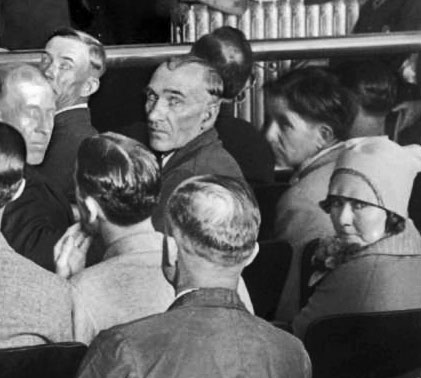
People in the audience
See a better and present-day photo of this
house and another view of old City Hall at
Tampa Changing and an excellent investigation into the current house's
authenticity at
Tampania Blog. See "Hortense
the Beautiful" for more about our present City Hall, built in 1915.
|
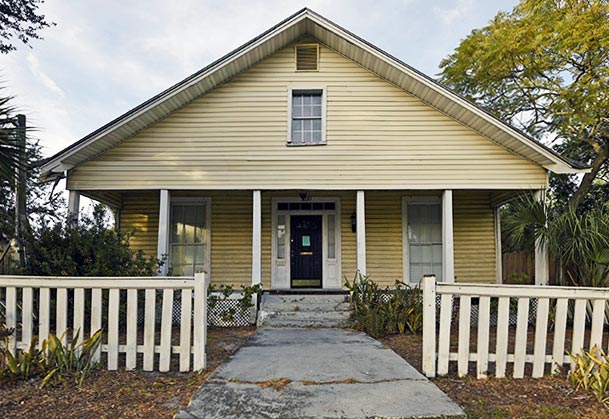













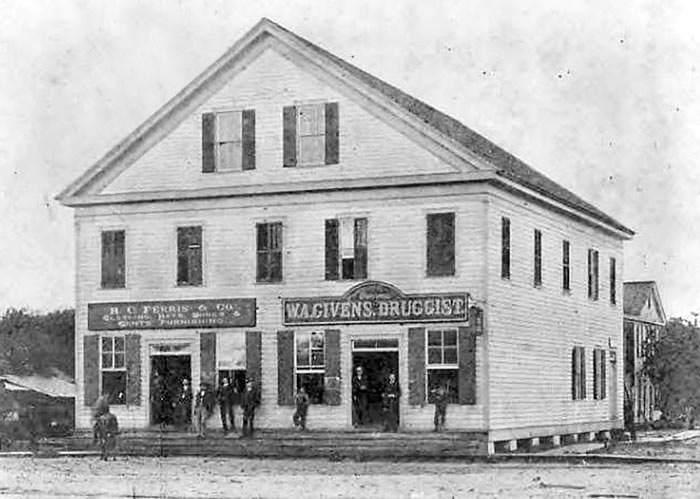





 Physicians in
Hillsborough County had long tried to organize in an effort to solve
the public health problems of disease and poor sanitation brought on
by primitive conditions and rapid growth. Individually or in small
groups, they had led the fight for public health officers, a
dependable water supply, indoor plumbing and paved streets. They
also worked to establish a quarantine hospital for use in times of
epidemic.
Physicians in
Hillsborough County had long tried to organize in an effort to solve
the public health problems of disease and poor sanitation brought on
by primitive conditions and rapid growth. Individually or in small
groups, they had led the fight for public health officers, a
dependable water supply, indoor plumbing and paved streets. They
also worked to establish a quarantine hospital for use in times of
epidemic.












